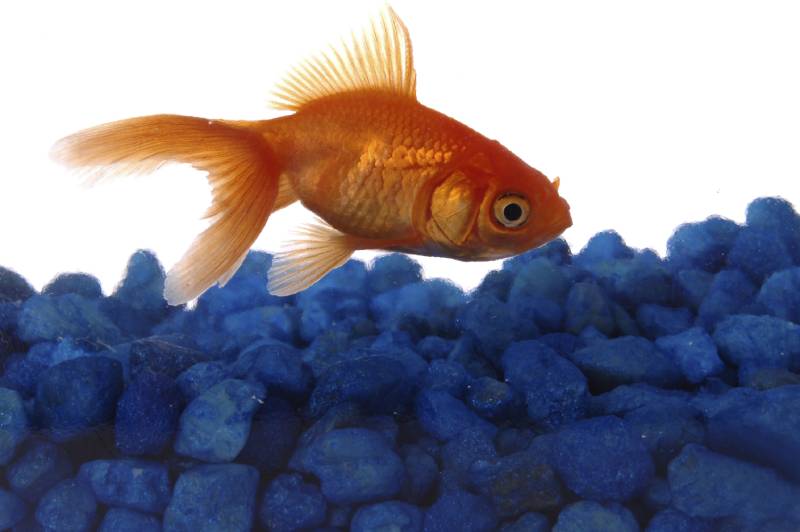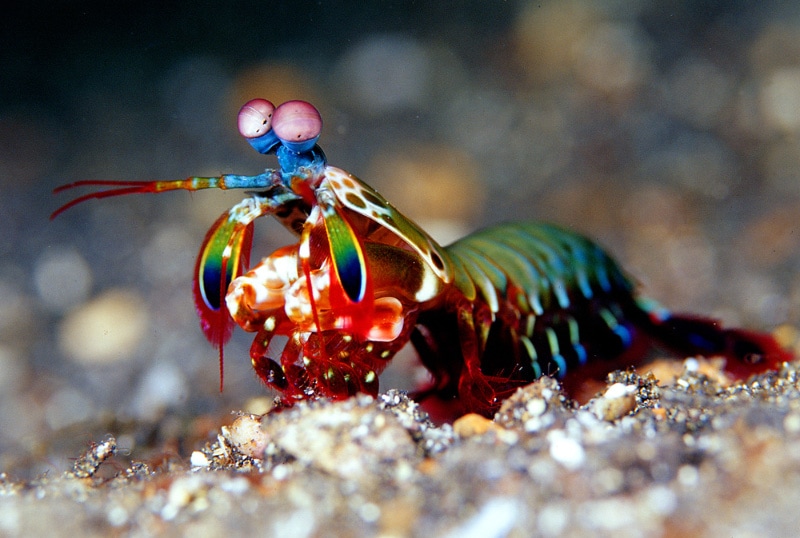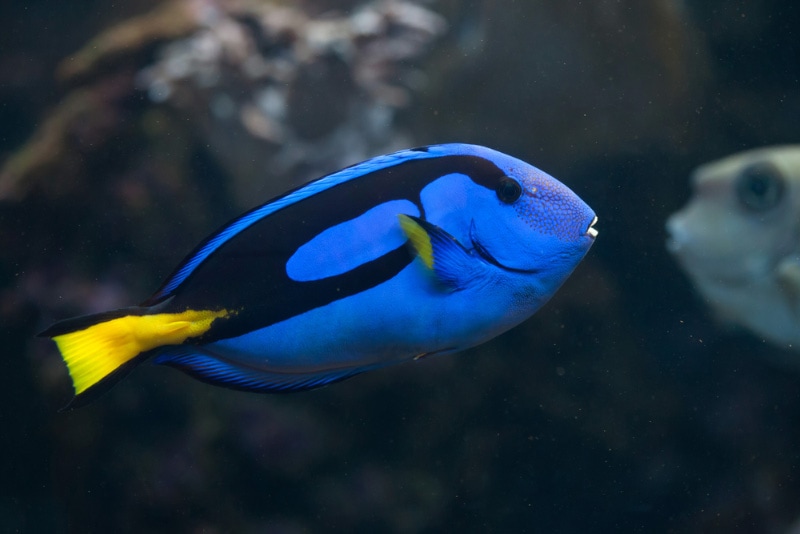How Big Do Mollies Get? With Size & Growth Chart
Updated on
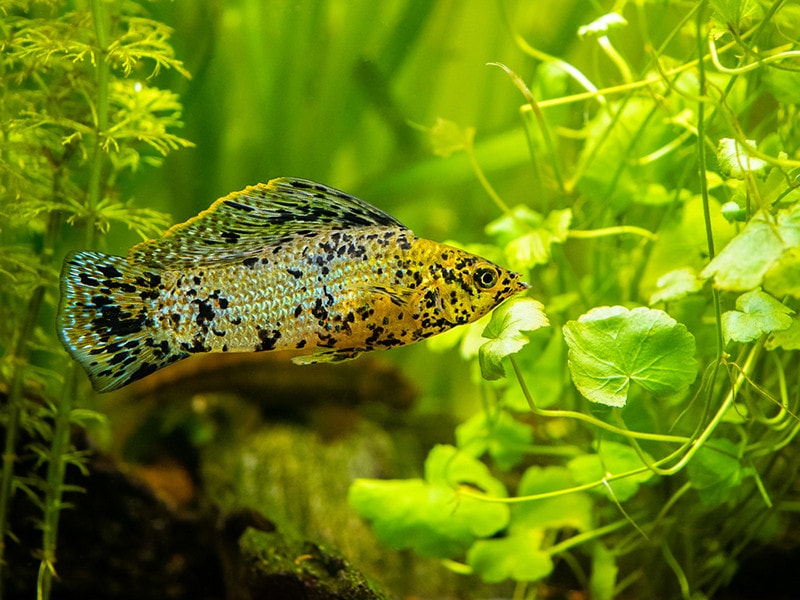
The bright and colorful Molly is a peaceful and tropical fish that is commonly kept in community aquariums. They are available in a variety of different types, sizes, and colors that make them attractive aquarium fish. Mollies are popular in aquariums due to their ability to adapt to different aquarium conditions while being more forgiving of beginner mistakes.
Learning how big your Molly will get is important when choosing the right-sized aquarium for these fish. Even though Mollies are not very large fish, they still need appropriately sized fish tanks because they can grow up to 5 inches in length.
This article will discuss how large Molly fish can grow and all you need to know about helping your Molly fish receive the right care to reach their adult size.
The 5 Facts About Molly Fish
- Molly fish are omnivores and eat a variety of plant and animal-based foods.
- Mollies can survive in both freshwater and brackish waters, although they do not need a high salinity content in their water to survive.
- Instead of producing eggs, Mollies give live birth and fertilization occurs inside the female Molly.
- Mollies enjoy eating algae which can be found growing on the tank’s glass or plants.
- The lifespan of a Molly fish is fairly short, and they only live between 4 to 5 years of age.
Molly Fish Size & Growth Chart
The Molly fish is not very large, and they grow fairly quickly. You should expect most breeds of Mollies to reach an adult size of 2 to 5 inches, with females growing larger than males. The average size for an adult Molly is 4 inches, and some female Mollies can reach 5 inches in size.
Some breeds of Molly fish do not grow very large and only reach an adult size of 2 or 3 inches, while others can grow up to 5 inches in size.
Most female Mollies are 1 or 2 inches bigger than the males, and females will have rounded bodies which can make them appear larger.

| Age | Length Range |
| 1 week | 0.4 inches |
| 3 weeks | 1 inch |
| 1 month | 1–1.5 inches |
| 3 months | 2–3 inches |
| 6 months | 3–4 inches |
| 8 months | 4.5–5 inches |
When Does a Molly Fish Stop Growing?
Mollies typically stop growing at around 6 months of age. This is the age when they will be fully mature and close to their adult size, if not already fully grown. Your Molly might continue to grow half an inch in size up until they are 8 months old.
Before reaching adult size, Mollies will grow through the following stages of growth:
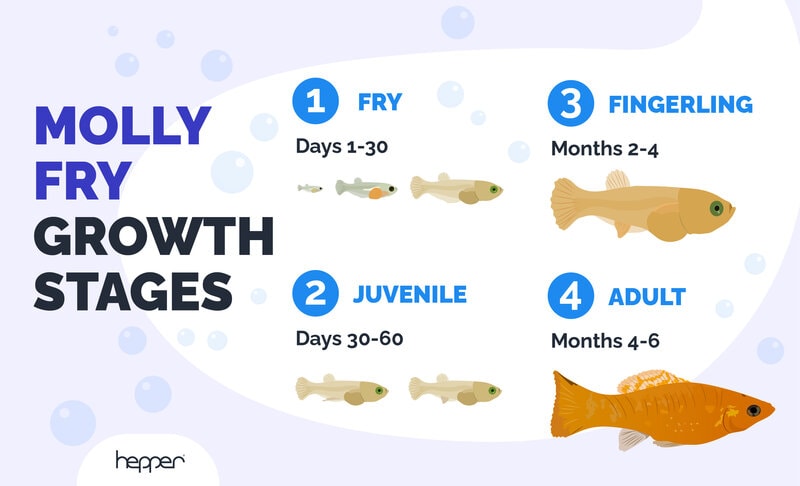
- Stage 1 (Fry) – Around days 1 to 30, the Mollies will be tiny fry or baby fish that have not fully developed their colors yet. Parts of their body will look transparent, and they will hide more often. Their organs will look dull at first, but they will soon develop a more intense color after a week.
- Stage 2 (Juvenile) – Juvenile Mollies at days 30 to 60 will start to develop a dull-colored body, and they will lose their transparency after a month. Here you will see the gravid spot and reproductive organs developing which can be used to determine the genders of each fry.
- Stage 3 (Fingerling) – The Mollies will soon be the size of a small finger, and they will become sexually mature between 2 and 4 months of age. This is the time when the males and females can be separated if you do not want more breeding.
- Stage 4 (Adult) – At 4 to 6 months, the Molly will be fully grown. They can now be placed in the main aquarium and fed an adult diet. Mollies will be between 3 to 5 inches in size at this stage, depending on the breed you are keeping.
Factors Affecting the Size of Mollies
Like with most fish, certain factors can affect the size of Mollies. This includes gender, tank size, diet, and breed.
- Gender – Male Molly fish are smaller than females. This is typically due to females having to be larger to be pregnant, and this can be seen by their rounder bellies. Male Mollies have slender bodies and can be half an inch shorter than their female counterparts. In the case of sailfin or long-finned Mollies, the males have longer fins which can make them appear bigger.
- Tank Size – Tank size can influence the growth of a Molly fish, along with their likeliness to survive into adulthood. Although the Molly fry should be placed into a separate tank from the adults to prevent them from being eaten, keeping the fry or juvenile Mollies in a small tank can negatively affect their growth. A small tank housing a lot of Molly fish contributes to poor water quality, and there will be a noticeable lack of space for each fish to swim comfortably and grow if they are continuously swimming into each other.
- Nutrition – Good nutrition is the key to healthy fish fry and development. If the Mollies are raised on a poor diet that does not meet their nutritional requirements, you will start to notice slower growth, wasting away (emaciation), skeletal deformities, and stunted growth.
- Breed – The size of a Molly fish can also be determined by the type of Molly. Giant sailfin or Yucatan Mollies are usually the largest Molly fish, reaching a size of 5 to 6 inches as an adult. Whereas the Balloon Molly is the smallest Molly that rarely grows larger than 3 inches in size.
Ideal Diet for Maintaining a Healthy Weight
Mollies are omnivores, so they benefit from a diverse diet that contains animal-based proteins along with plant matter. Molly fry should be fed a diet of baby brine shrimp, micro pellets, and egg yolk. Avoid overfeeding the fry as it can cause issues with the water quality.
Mollies at the juvenile and fingerling stage should be fed micro pellets, granular foods, brine shrimp, freeze-dried bloodworms, or tubifex worms.
As an adult, Mollies should be fed commercial fish food formulated for omnivorous fish like livebearers, and their diet can be supplemented with live or freeze-dried worms or shrimp. This will ensure that they are receiving the right nutrition to stay healthy and maintain a healthy weight.
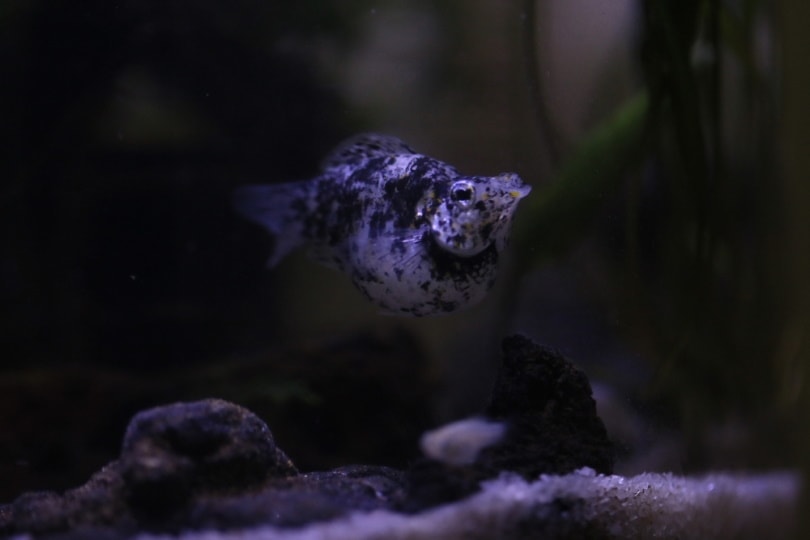
How to Measure Your Molly Fish
Measuring a fish can be tricky, and it needs to be done with caution. Measuring your Molly accurately would mean that you need to take them out of the water for a few seconds to get a proper measurement.
You will need to use a tape measure to measure the length of your Molly fish. Measuring can be quite unpleasant for your fish, so it should only be done occasionally. In most cases, the growth of your fish is quite noticeable through pictures that you can use to document your Mollies’ growth and progress.
When it comes to measuring, use clean hands to handle your Molly fish, and place them in the palm of your hand a few inches out of the water. Have your measuring tape ready to measure your Molly from their mouth to the tip of their tail. They might flop around on your hand for a bit, which can interfere with the measurements.
Avoid keeping your Molly out of the water longer than 10 seconds, and ensure that your hand is kept wet with tank water to prevent irritation to your Molly’s slime coat.
Conclusion
Raising and growing Mollies from birth or watching your store-bought Molly grow into an adult and develop their final colors and patterns is a fascinating process. As a small tropical fish, Mollies rarely exceed 5 inches in size, making them perfect for community aquariums above 30 gallons.
You can keep Mollies with other peaceful tropical fish, and you get to choose from several different types of Molly fish breeds to find one that grows to the size you want.
You Might Also Be Interested In:
- How Long Are Dalmatian Mollies Pregnant For? Full Gestational Period & More!
- How Long Do Dalmatian (Dalmation) Mollies Live? Stages & Lifespan Explained
Featured Image Credit: Joan Carles Juarez, Shutterstock

